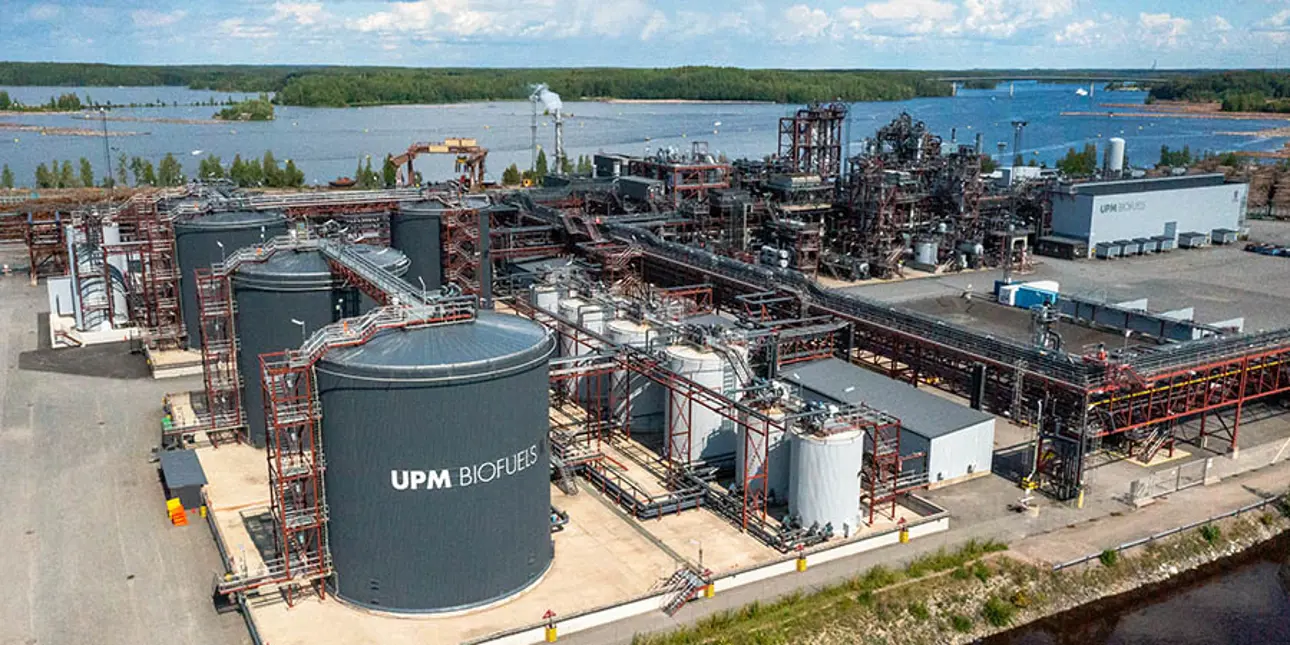Pioneering data-driven maintenance for safety and productivity
Feb 24, 2025
UPM Kaukas, located in Lappeenranta, Eastern Finland, is a large integrated bioproduct mill that includes pulp, paper, sawmill, biorefinery, and energy production units, as well as UPM’s largest research center. The biorefinery, the first of its kind globally, produces renewable diesel and naphtha from tall oil, a residue of the pulping process. Besides this innovative process, the plant is also pioneering advanced condition monitoring practices to ensure process reliability.

A hot hydrogen process in a cold climate
The biorefinery process involves handling high-temperature fluids and gases. In high-pressure conditions, hydrogen, for instance, can form explosive mixtures when in contact with air.
“The biorefinery is a safety-critical environment, where safe operation is a daily requirement,” says Marko Leinonen, Operations Manager at the UPM Lappeenranta Biorefinery.
“If there is an alarm in the field, you must know what you can do. For example, there could be a leak in a pipeline that produces no visible flame,” says Teijo Parkkonen, Condition Monitoring Specialist at the UPM Biorefinery since the project phase in 2013.

Teijo Parkkonen (left) and Tommi Karsikas discuss gas detectors and other personal protection equipment required for the ATEX environment.
The process mostly takes place outdoors, making the operating environment even more challenging. Winter temperatures can drop below -30°C, which makes condition monitoring essential for maintaining safety and operational consistency. “One winter, we had to do a process cold start at -18°C, and the bearings of one motor failed almost immediately, leading to a vibration alarm,” says Parkkonen.
“And in a recent power outage, we encountered an issue with a high-pressure pump motor. Our condition monitoring detected abnormal vibration, allowing us to start a backup pump in time.”

The vibration of each machine is measured from all bearings to effectively prevent disturbances.
“The way machines are stored can also cause problems during start-up if not done correctly. Condition monitoring helps detect corrosion damage even before a machine enters production. That’s why proper commissioning is critical,” says Parkkonen.
Collaboration prevents disturbances
Safety and avoiding process interruptions are top priorities at the biorefinery. “Preventing failures is crucial. With condition monitoring, we prevent many unplanned maintenance breaks and increase safety,” says Leinonen.
The UPM Lappeenranta Biorefinery relies on the Valmet DNA Automation System to manage the refinery and its sub-processes. The system also monitors the condition of hundreds of machines.
“When a vibration alarm is triggered, operators can immediately determine whether the issue originates from the process or if a pump is starting to cavitate,” says Leinonen.
“When a vibration alarm is triggered, operators can immediately determine whether the issue originates from the process or if a pump is starting to cavitate”
Marko Leinonen
Operations Manager, UPM Biofuels

“If field operators hear an abnormal sound, they check the data for anomalies in vibration and temperature levels. Our condition monitoring team then conducts a detailed analysis, ensuring a proactive response. This collaboration adds value across all functions.”
Persistent proactive development
“Common data between process and condition monitoring is incredibly valuable, and remote access further enhances efficiency. We are constantly developing new ideas, and our automation system must adapt to these evolving requirements,” says Parkkonen.

Operators reported a developing defect, which Teijo Parkkonen analyzes in detail using the Valmet DNA process and condition monitoring data.
“We’ve been involved from the start, over 10 years ago, and have learned UPM’s proactive development approach. We have listened to their needs and developed the solutions. A demanding and persistent customer is a great asset, and that determination ensures projects reach the finish line,” says Tommi Karsikas, a Senior Application Specialist at Valmet.
Data-driven maintenance decisions
The biorefinery carries out lubrication maintenance regularly, with additional servicing triggered by condition monitoring. Lubrication information is built into the automation system, indicating when lubrication needs to be performed, and they are done accordingly.
“We perform all maintenance actions based on condition monitoring. The system’s maintenance planning also tracks the operating hours of each machine, triggering notifications when maintenance is needed,” says Parkkonen.

The boiler’s flue gas fan, a critical non-redundant machine, has its performance optimized through data-driven maintenance decisions.
“Reliability is maximized by running machines at optimal rates and avoiding resonance zones. Redundant machines are operated in cycles that never overlap, ensuring that a fresh backup machine is always available. By making data-driven maintenance decisions, we can achieve significant savings on repair costs,” adds Parkkonen.
Investment decisions made easy
UPM documents each prevented failure, making it easier to calculate investment payback. “Avoiding production interruptions leads to significant cost savings. When making investment decisions, we prioritize safety and the criticality of the machines,” says Leinonen.
Avoiding production interruptions leads to significant cost savings.

Teijo Parkkonen connects a piezo-electric online vibration sensor to an electric motor.
“Today, every new rotating machine includes a built-in investment in condition monitoring. We define the vibration profile that machines need to pass before they are taken into production use,” he adds.
In addition to online measurements, route-based condition monitoring is conducted, with each route checked once a month.
“Implementing our route-based condition monitoring with the Valmet Maintenance Pad was significant. Now, we can access all route measurement data within the same automation system as our online condition monitoring. By combining online and route measurements, we achieve a more comprehensive condition monitoring approach,” says Leinonen.

UPM Lappeenranta Biorefinery uses Valmet Maintenance Pad to synchronize offline route measurements with online condition monitoring.
By being demanding, the UPM team has accelerated Valmet’s condition monitoring development. “This is such a safety-critical environment that we are very happy to have Valmet working with us on this,” concludes Parkkonen.
Text: Ralf Salonen